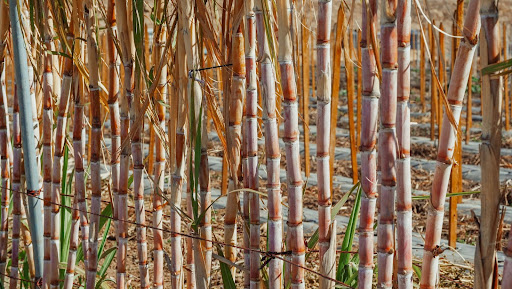The Value of Sugar Beet Vs Sugar Cane: a Closer Appearance at Their Manufacturing Processes and Applications
The relevance of sugar beet and sugar cane extends past their function as sources of sucrose. Each plant features distinctive producing procedures that influence their applications throughout various sectors. While sugar beet supports not just food production yet additionally biofuels and plant foods, sugar cane primarily serves the food field with important results. Recognizing these distinctions exposes exactly how each plant shapes farming economic climates and industry practices internationally, prompting additional exploration into their one-of-a-kind payments.

Overview of Sugar Beet and Sugar Cane
Sugar beet and sugar cane are 2 primary sources of sucrose, each with unique characteristics and cultivation approaches. Sugar beet, an origin veggie, flourishes in pleasant environments - Sugar beet vs sugar cane. It is grown largely in the North Hemisphere and calls for well-drained soil. The plant usually expands to an elevation of about 18 inches, with a white, fleshy origin consisting of concerning 15-20% sucrose. On the other hand, sugar cane is an exotic lawn that flourishes in warm, moist problems. It can get to heights of up to 12 feet and includes tall, jointed stems that store sucrose concentrations varying from 10-15%. The growing of sugar cane is labor-intensive and frequently involves hands-on harvesting. Both plants work as vital farming products, providing raw materials for sugar manufacturing and numerous byproducts. Their growing practices significantly impact regional economic climates and worldwide sugar markets, making them integral to the agricultural landscape
Collecting Methods for Sugar Beet and Sugar Cane
Collecting strategies for sugar beet and sugar cane vary considerably due to the one-of-a-kind characteristics of each crop. Sugar beet gathering commonly utilizes customized equipment recognized as beet harvesters, which effectively uproot the beetroots from the dirt while reducing damage. These devices utilize a collection of blades to reduce the tops and lift the origins, guaranteeing that the beets remain undamaged for processing.In comparison, sugar cane harvesting often entails 2 primary methods: manual cutting and mechanical harvesting. Hand-operated harvesting, still prevalent in some areas, calls for workers to cut the cane stalks by hand utilizing machetes. This approach enables careful harvesting yet is labor-intensive. Mechanical farmers have actually acquired appeal, using revolving blades to reduce and gather the stalks swiftly. Both methods aim to optimize yield and quality, with mechanical harvesting significantly embraced to satisfy rising manufacturing demands effectively.
Handling Approaches for Sugar Beet
After being gathered, sugar beetroots undertake a series of processing actions to extract sucrose properly. The first action includes cleaning the beetroots to remove soil and impurities. Next off, the beets are cut right into slim strips recognized as cossettes, which enhances the area for extraction. These cossettes are then based on warm water extraction in a diffusion procedure, permitting sucrose to dissolve into the water.Following removal, the juice consists of pollutants and is made clear utilizing lime and warmth to speed up solids. The clarified juice is after that focused via dissipation, removing excess water and increasing sugar concentration. To crystallize check my site the sucrose, the focused juice undertakes further dissipation and air conditioning, forming sugar crystals. Lastly, these crystals are divided from the continuing to be syrup through centrifugation, dried out, and packaged for circulation. This approach ensures a high yield of sucrose while keeping the top quality of the end product.
Processing Approaches for Sugar Cane
Processing sugar cane involves a series of steps created to draw out sucrose efficiently. The procedure starts with harvesting, where fully grown sugar cane is reduced and transported to processing facilities. As soon as at the mill, the cane goes through washing to remove contaminations. The next action is squashing, where mechanical rollers extract juice from the coarse stalks.This juice is then made clear utilizing warm and lime to get rid of suspended solids and pollutants. Following clarification, the juice is evaporated to concentrate the sugar content, causing a thick syrup. The syrup goes through formation, where sugar crystals form as the syrup cools. These crystals are divided from the staying molasses with centrifugation.Finally, the sugar is dried out and packaged for circulation. This extensive handling technique assurances that sugar cane yields a high-grade item, suitable for numerous culinary and industrial applications, while taking full advantage of the extraction of sucrose from the raw material.
Nutritional Differences Between Sugar Beet and Sugar Cane
The contrast between sugar beet and sugar cane prolongs beyond their handling methods to incorporate considerable dietary distinctions. Sugar beet consists of not just sucrose but additionally a variety of vitamins and minerals, consisting of vitamin C, potassium, and magnesium. These nutrients add to its potential wellness advantages, such as sustaining immune feature and keeping electrolyte balance. In comparison, sugar cane primarily offers sucrose with very little levels of important nutrients.Additionally, sugar beet has a greater fiber material, which can assist in food digestion and advertise satiety. The existence of anti-oxidants in sugar beet might likewise offer safety results versus oxidative anxiety, an aspect linked to different persistent illness. While both resources are primarily used for sugar production, the nutritional profiles recommend that sugar beet might use added health benefits contrasted to sugar cane. This difference is crucial for customers looking for even more than simply sweeteners in their diets.
Applications of Sugar Beet in Numerous Industries
A range of industries leverage sugar beet for its functional applications beyond sugar production. In the food market, sugar beet functions as a vital component in creating numerous refined foods, consisting of desserts and baked goods, because of its all-natural sweetness. In addition, the pulp originated from sugar beet is made use of as animal feed, providing a nutrient-rich source for livestock.In the biofuel sector, sugar beet is significantly identified for its capacity in creating bioethanol, adding to renewable resource services. The farming sector advantages from sugar beet's byproducts, which can be made use of as organic plant foods, enriching soil health and fertility.Furthermore, sugar beet essences are employed in drugs and cosmetics, where they work as natural sugar and humectants. These varied applications highlight sugar beet's duty as a beneficial his response source in enhancing sustainability and innovation throughout numerous sectors, strengthening its importance in contemporary production methods.
Applications of Sugar Cane in Numerous Industries

Frequently Asked Concerns
What Environmental Effects Are Connected With Sugar Beet and Sugar Cane Manufacturing?
The ecological influences of sugar beet and sugar cane manufacturing consist of dirt deterioration, water use, pesticide application, and habitat disruption. These factors add to environmental discrepancies, elevating issues about sustainability in agricultural practices connected with both plants.
Just How Do Sugar Beet and Sugar Cane Compare in Terms of Economic Viability?
The financial feasibility of sugar beet and sugar cane varies based on factors like geographic place, production expenses, and market need - Sugar beet vs sugar cane. Both plants offer one-of-a-kind benefits, affecting farmers' decisions pertaining to farming and investment in different areas
What Are the Main Regions for Sugar Beet and Sugar Cane Growing?

Exactly How Does Environment Impact the Growth of Sugar Beet and Sugar Cane?
Climate greatly influences the development of sugar beet and sugar cane. Sugar beets flourish in cooler temperature levels, while sugar cane needs cozy, tropical problems. Sugar beet vs sugar cane. Both crops rely on adequate rainfall and sunshine for excellent development and return
Are There Any Type Of Considerable Health And Wellness Concerns Connected to Consuming Sugar From These Sources?
Health and wellness problems related to sugar intake include excessive weight, diabetes mellitus, and heart condition. Both sugar beet and sugar cane-derived sugars can add website here to these problems, particularly when consumed in extreme amounts, no matter of their resource.